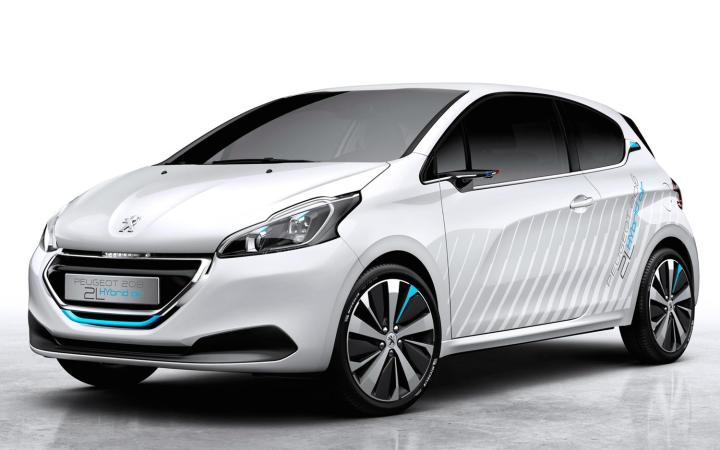
PSA Peugeot Citroen has put its Hybrid Air powertrain on indefinite hold, according to Car and Driver. The French company apparently couldn’t find a partner to help cover the development costs of the system.
PSA originally planned to launch Hybrid Air on production cars in 2016, making for one very unusual approach to the ever-present problem of fuel economy.
It uses compressed air and a hydraulic motor instead of electric power to assist an internal-combustion engine, in theory yielding the same fuel economy benefits as a conventional hybrid.
The system uses an air (actually pure nitrogen)-filled bladder that displaces hydraulic fluid, which actually powers the car. Reversing the fluid flow re-pressurizes the system, and the cycle begins again.
A Hybrid Air car doesn’t run on air power for very long distances, but PSA says it can increase the fuel economy of a Peugeot 208 hatchback by up to 45 percent.
PSA claims this setup is more efficient in low-speed urban traffic than an electric motor and battery pack, because it can recover more energy more quickly without turning on the combustion engine.
Plus, it would be pretty cool to say that your car is powered by air.
However, PSA can’t provide the estimated 500 million euros (about $565 million) needed to put the Hybrid Air System into production, would reportedly have to encompass 500,000 cars per year to make business sense.
The French company courted Ford and Chinese carmaker Dongfeng (a PSA shareholder), but neither party was interested.
Officially, Hybrid Air is just shelved, but it seems unlikely to back a comeback unless PSA gets an infusion of cash.
Editors' Recommendations
- Stellantis going full throttle on electric vehicles, plug-in hybrids at CES 2022
- 2020 Audi A8 gains plug-in hybrid powertrain, sporty S8 model
- Fiat Chrysler and Peugeot Citroen reach an agreement to merge
- Bentley will offer a hybrid powertrain on every model by 2023
- This futuristic concept car shows how Citroen envisions road-tripping in 2119


